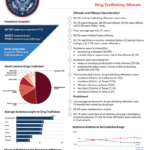
Observations on the Chino Hills Arrest: A Legal Perspective
The recent arrest of 54‐year‐old Keith Wulff in Chino Hills has sparked considerable debate about law enforcement’s approach to tackling drug trafficking and illegal firearms possession. In this opinion editorial, I take a closer look at the case, offer reflections on the legal twists and turns involved, and discuss the broader implications for our community. The incident, which unfolded last Saturday near Soquel Canyon Parkway and Elinvar Drive, highlights the many tricky parts and tangled issues inherent in modern criminal justice. It also prompts us to consider how public safety, legal boundaries, and community participation all become super important elements in this heated debate.
On the afternoon of the arrest, deputies acting on a traffic stop uncovered evidence of suspected methamphetamine along with an illegally possessed firearm and ammunition. Although the man had previous convictions barring him from owning such dangerous items, the discovery of additional contraband meant that Wulff now faces multiple charges including narcotic sales and unlawful possession of a weapon. It is important here to note how such cases reveal the nerve-racking and overwhelming nature of law enforcement’s pursuit of justice in situations loaded with problems.
The Case Timeline and Its Legal Implications
Understanding the basic timeline of events is essential when you try to figure a path through the complicated pieces of legal procedure in a case like this. A table outlining the key moments of the arrest may help clarify the evolution of events.
| Time | Event |
|---|---|
| 12:41 p.m. | Traffic stop near Soquel Canyon Parkway and Elinvar Drive initiated by police |
| ~Immediately after stop | Deputies executed a search warrant at Wulff’s residence |
| Following Search | Discovery of suspected methamphetamine, firearm, and ammunition |
| After arrest | Booking at the West Valley Detention Center |
This timeline not only maps out the chronological flow of the arrest but also underlines the importance of every small step taken by law enforcement. Each decision—from pulling the vehicle over to obtaining a search warrant and finally making the arrest—is an example of how law enforcement officers must quickly figure a path through twisted legal requirements and fine points that are by no means straightforward.
Understanding the Legal Challenges and Community Responsibility
The arrest in Chino Hills is emblematic of a broader struggle experienced in many communities today. With crimes that are loaded with issues such as drug trafficking and illegal arms possession, law enforcement agencies are forced to work through a maze of small distinctions that make cases like these both nerve-racking and intimidating to address. One cannot help but wonder whether the current strategies effectively tackle these intertwined problems or if alternative methods might be required.
In situations like these, law enforcement and citizens alike must steer through a series of tricky parts that include:
- Evaluating the evidence obtained during a traffic stop
- Working within the bounds of legal authority to conduct searches
- Understanding and applying the law in contexts complicated by previous criminal records
- Balancing community safety with individual rights
These points underline that not only are there tangled legal issues to address, but there is also a need for a community that is well informed and ready to assist in legal matters when needed. The Chino Hills Police Department’s public appeal for additional information reinforces the idea that community engagement remains a key and essential element in keeping society safe.
Evaluating the Law Enforcement Methods
One of the most controversial subjects in recent legal debates revolves around the methods employed by law enforcement agencies in the pursuit of justice, particularly when dealing with aspects related to drug trafficking and illegal firearm possession. The decision to stop Wulff’s vehicle based on an undisclosed violation and the immediate search of his property raises several questions. It forces us to take a closer look at whether the approaches used are balanced, fair, and in line with constitutional rights.
The legal process in such matters is fraught with confusing bits that require officers to quickly make decisions under pressure. The steps include:
- Identifying acceptable grounds for a traffic stop
- Efficiently collecting evidence while protecting the rights of the suspect
- Executing a search warrant based on probable cause
- Handling evidence in accordance with legal standards to ensure it can be admissible in court
Each of these steps involves subtle parts that, if not carefully navigated, can lead to challenges in legal proceedings. Critics argue that in some cases, the process can be too overwhelming, especially if community trust is eroded by perceptions of over-policing or by the nerve-racking pressure put on individuals during stops. However, the realities of confronting dangerous criminals with a history of offenses imply that law enforcement must sometimes work through a labyrinth of legal hoops to secure public safety.
Community Safety Versus Individual Rights: The Tightrope Walk
The debate over public safety versus individual rights is not new, yet it becomes ever more pressing in cases loaded with problems. When a suspect with previous convictions and restrictions on firearm ownership is found in possession of illegal substances and deadly weaponry, the community’s call for safety tends to win out. At the same time, legal safeguards are always in place to ensure that any action taken does not trample on the fundamental rights of individuals.
In a democratic society, the balance between these two interests is often managed by:
- Judicial oversight over law enforcement procedures
- Transparent and accountable policing practices
- Robust legal mechanisms to handle arrests and searches
- Community input in shaping policing policies
Each of these factors represents a crucial twist or turn in the ongoing dialogue about safety, rights, and accountability. What seems obvious on the surface—the need to protect the community from dangerous individuals—must be corroborated by careful consideration and respect for legal processes that safeguard against abuse of power.
The Role of Social Media and Public Alerts
The rapid spread of information via social media has had a profound impact on how legal cases like the one in Chino Hills are reported, understood, and debated by the public. When the San Bernardino County Sheriff-Coroner Department made an announcement about the case, it was quickly amplified by platforms such as Facebook and Twitter, resulting in widespread community involvement. This digital dynamic reinforces that today’s landscape is not only about legal procedures but also about public sentiment and the power of connected communities.
Social media networks facilitate a exchange that can be both beneficial and problematic:
-
Pros:
- Instantaneous dissemination of important alerts
- Community engagement in investigative tips
- Enhanced transparency through accountability measures
-
Cons:
- Risk of spreading unverified or misleading information
- Potential for public panic or overreaction
- Challenges in maintaining the privacy rights of those involved
Ultimately, while social media provides a vital channel for stirring public involvement and awareness, it also underscores the need to be vigilant about the little details—those fine shades of accuracy and reliability that ensure information remains factual and uninflamed.
Legal Precedents and Community Perceptions
Cases involving repeated offenders who engage in illegal activities such as drug trafficking and firearm possession are not uncommon. However, each case brings its own set of subtle parts and tiny legal nuances that contribute to its overall complexity. Legal precedent is established when law enforcement and the courts exchange insights on how best to proceed with these nerve-racking incidents. In the wake of the Chino Hills seizure, legal professionals are once again called to get into the fine points of evidence gathering, search procedures, and community notification.
Some of the key legal questions that emerge from this case include:
- How do previous convictions affect an individual’s rights concerning new charges?
- What constitutes sufficient evidence for the search of a suspect’s residence?
- In what ways can community cooperation be optimized without compromising investigative integrity?
- How should the legal system balance quick action with due process, especially when lives might be at risk?
These questions illustrate that legal cases of this nature require law enforcement and the judicial system to figure a path through a maze of legal procedures and community expectations. It is important to keep in mind that while the legal process is designed to be rigorous, it is also built on the principle that no one should be deprived of rights unless overwhelming evidence exists.
The Intersection of Drug Policy and Firearm Regulations
The confluence of drug trafficking and firearm regulations introduces another set of tangled issues that add to the nerve-racking atmosphere surrounding cases like this. Societal debates have long raged over how to manage the dangerous combination of narcotics sales and the illegal possession of weapons, with advocates on both sides stressing the need for reforms.
From a legal viewpoint, the important factors include:
-
Drug Policy:
- Determining the appropriate level of intervention through rehabilitation or incarceration
- Addressing the small distinctions between possession for personal use versus intent to distribute
- Understanding how drug-related offenses intersect with broader public safety concerns
-
Firearm Regulations:
- Interpreting existing laws regarding firearm possession by convicted criminals
- Weighing the effectiveness of background checks and other preventive measures
- Discussing the fine points of what constitutes illegal possession versus lawful use for self-defense
The marriage of these separate yet interdependent issues makes the overall case a potent example of how legal systems must continuously adapt to new challenges. Every element—from the discovery of methamphetamine to the finding of an illegal firearm—requires officials to dive in and analyze a host of small distinctions that can ultimately determine the outcome of a trial.
How Do We Improve Community Trust?
One of the most challenging yet essential aspects of advancing law enforcement accountability is fostering trust between police forces and the communities they serve. The Chino Hills incident serves as a reminder of the importance of transparency, accountability, and open communication. When citizens know that their local police departments are working not only to enforce the law but also to safeguard the legal rights of all individuals, it builds a foundation for cooperation and mutual respect.
Improving community trust involves several key strategies, such as:
-
Enhanced Training:
- Regularly updating training protocols to include community engagement
- Emphasizing the small distinctions in crisis intervention strategies
- Focusing on the need to manage tricky parts during high-pressure situations
-
Public Transparency:
- Issuing timely and clear public statements on incidents
- Inviting community questions and addressing concerns openly
- Utilizing social media channels for transparent communication
-
Community Involvement:
- Encouraging the public to provide helpful tips and valid insights
- Collaborating with local leaders to deepen law enforcement-community ties
- Holding public forums that help steer through the maze of contemporary policing practices
By working through these strategies, communities can help mitigate the nerve-racking feelings that often accompany such incidents while strengthening the legal and civic relationships that underpin effective law enforcement.
The Role of Media in Shaping Our Perception of Justice
Media coverage plays a profound role in the way we interpret and understand legal incidents. With the coverage of the Chino Hills arrest spanning local outlets to national headlines, media representations can influence the community’s perception in both subtle and obvious ways. Journalistic narratives, when constructed with care and fairness, provide a lens through which citizens grasp the fine shades of legal debate.
Some of the ways media can contribute positively include:
- Presenting clear timelines so that the public can follow events step by step
- Offering balanced perspectives that encompass both law enforcement actions and community concerns
- Highlighting the hidden complexities of legal procedures in everyday language
- Encouraging community members to take part by submitting tips or asking informed questions
However, the media also bears the responsibility of avoiding sensationalism, which can exacerbate the inherently intimidating and overwhelming nature of such cases. By diving in thoughtfully and reporting on the subtle details without exaggeration, reporters can help ensure that justice is both done and seen to be done.
Assessing the Broader Impact on Society
The arrest in Chino Hills is not an isolated incident but rather a microcosm of larger societal trends. As drug trafficking and illegal firearms possession continue to create safety concerns nationwide, it is essential to identify the small distinctions that differentiate isolated cases from systemic issues. This broader impact can be understood by analyzing the following factors:
-
Public Safety:
- The role of law enforcement in promptly responding to crimes
- The necessity for cross-agency cooperation on matters that are on edge
- The importance of preventive measures in reducing similar incidents
-
Legislative Reforms:
- Potential changes in laws regarding background checks and firearm possession
- Revisions in drug policy that may ease the nerve-racking burden on judicial systems
- Innovative strategies to manage law enforcement resources more efficiently
-
Community Engagement:
- The benefits of active community policing and partnerships
- The role of public forums and town hall meetings in promoting transparency
- Encouraging ownership of community safety among all citizens
While some may see the legal system as being full of problems and tangles, it is vital to recognize that continuous improvements and informed debate can bring about practical changes. These measures, though they may seem intimidating at first glance, are critical pathways to ensuring justice and reinforcing public trust.
Learning from the Case: A Call for Balanced Reforms
In light of the Chino Hills case, there is a pressing need to work through the fine points of our current legal and law enforcement methodologies. The facts of the case offer an opportunity to get into the nitty-gritty and examine what changes might be needed. While some critics argue that existing strategies are off-putting and sometimes too forceful, others suggest that swift action is super important in preempting further harm in communities already loaded with issues.
Efforts to promote balanced reforms should address the following key areas:
-
Policy Review:
- Ensuring that traffic stops and subsequent searches are carried out in strict adherence to constitutional rights
- Reviewing the evidence thresholds that justify the issuance of search warrants
- Implementing better oversight mechanisms to guarantee that no one is unjustly targeted
-
Officer Training:
- Conducting regular workshops to help officers make quick, informed decisions amid twisting legal conditions
- Emphasizing the small distinctions in law that differentiate between suspicion and solid evidence
- Reinforcing the need to make your way through challenging situations with both caution and accountability
-
Community Partnerships:
- Strengthening ties between local law enforcement and community leaders
- Involving citizens in oversight committees and public safety discussions
- Building a feedback loop that can quickly identify and correct missteps in policing procedures
As we sort out these nerve-racking and at times tense issues, it is key for everyone involved to understand that no solution comes without a few worrisome twists and turns. The goal should be to achieve a system that protects public safety while also safeguarding individual freedoms.
Reflections on the Broader Legal Landscape
This case serves to remind us that the legal system is a living, breathing construct that must continually adapt to the evolving nature of crime. While some elements of the process, such as the immediate reactions during a traffic stop, can seem off-putting, they also reflect the critical need for swift action when lives may be at risk. Legal professionals must poke around in every small twist of the case to extract meaningful lessons that can inform better practices going forward.
Questions that arise in the wake of the arrest include:
- How can law enforcement ensure that evidence is collected in a manner that will stand up in court?
- What safeguards can be implemented to ensure searches are pursued only when absolutely necessary?
- How might changes in drug policy and background checks shape future interventions against criminals with a history of dangerous offenses?
- In what ways can community input steer reforms without compromising the efficiency of police operations?
These reflective questions are not merely rhetorical. They require an ongoing dialogue among lawmakers, law enforcement, and community stakeholders to help figure a path through the complex maze of legal challenges. Only through a collective commitment to transparency and improvement can we hope to produce a system that is as fair as it is effective.
Looking Ahead: Strategies for a Safer Future
In facing the challenging parts of modern law enforcement as demonstrated by the Chino Hills case, several proactive strategies emerge as potential guides for the future. These strategies are designed to address the overwhelming issues while encouraging community trust and legal accountability:
-
Collaborative Governance:
- Establishing regular channels between local police departments and citizen oversight committees
- Creating forums where law enforcement can explain the rationale behind their actions, making even the most nerve-racking aspects more understandable
- Integrating feedback from community representatives to refine policing practices over the long haul
-
Enhanced Transparency Measures:
- Improving public access to case details through carefully managed press releases and community bulletins
- Using digital platforms to track the progress of cases without exposing sensitive personal information
- Ensuring that media reports include the subtle details and small distinctions that give a full picture of legal decisions
-
Legal and Policy Reforms:
- Reviewing and, where necessary, amending legislation to address loopholes that allow dangerous individuals to operate with impunity
- Implementing training programs that help officers manage the off-putting aspects of high-risk interventions without infringing on rights
- Encouraging independent audits of police procedures to identify the tricky parts that need refinement
Each of these strategies requires careful thought and a commitment to working through the tangled issues that characterize modern police work. There are no quick fixes, but every improvement, no matter how small, can make a significant difference over time.
A Call for Open Dialogue and Continued Improvement
At its heart, the Chino Hills arrest should serve as a call for continued open dialogue among citizens, law enforcement, legal experts, and policymakers. Although the decision-making process in such cases involves many complicated pieces and even nerve-racking twists and turns, there remains a strong consensus that public safety and justice are must-have priorities. Enhancing communication channels, getting into the little details, and using community feedback as a guide can help accomplish a system that is both robust and fair.
It is worth noting that every legal case is a learning opportunity. The ability to make your way through even the most confusing bits of law is essential for building a resilient and responsive justice system. Public participation, when embraced responsibly, is one of the key ingredients in fostering trust and ensuring that legal decisions are made based on both justice and transparency.
Final Thoughts: Balancing Enforcement and Justice
In conclusion, the unfolding events in Chino Hills reveal not only the stark realities of modern law enforcement but also the essential need for thoughtful, balanced reforms. While the arrest of Keith Wulff has raised several concerns—from the swift execution of a search warrant to questions about ensuring legal fairness—it ultimately underscores the critical imperative to keep our communities safe. This balance between enforcing the law and safeguarding individual rights is one that our society must continually work through, carefully attending to every subtle part and fine point along the way.
As we figure a path through the twists and turns of cases that are at times intimidating and overwhelming, it remains incumbent upon us to keep the dialogue open. The Chino Hills incident, like many before it, is a stark reminder that tackling drug trafficking and illegal firearms possession is a shared responsibility between law enforcement and the community. Only by working together, with clear communication and unbiased evaluation, can we hope to find a pathway that addresses both the urgent needs of today and the intricate challenges of tomorrow.
Key Takeaways and Looking Forward
Let us summarize a few core observations that emerge from this case:
-
Swift Response and Legal Rigor:
- The police response to the traffic stop and subsequent search was swift and technically proficient.
- However, each legal decision made during the process reveals how even the smallest twist or turn in law can mean the difference between a fair outcome and a contested one.
-
Community Empowerment:
- The call for public assistance in providing additional tips demonstrates the important role of community engagement.
- Open channels between citizens and law enforcement not only strengthen public safety but also build trust in the legal process.
-
Media’s Role in Shaping Debate:
- Effective and responsible reporting is super important to ensure that the public receives a balanced perspective on high-stakes legal matters.
- Ensuring that media coverage focuses on the small distinctions and fine points of the case aids in a more nuanced public understanding.
-
Pathways for Reforms:
- Legal and policy reforms are needed to work through the tricky parts of how evidence is gathered and presented.
- These reforms must balance the nerve-racking need for quick action with constitutional rights that protect individual liberties.
By taking these observations seriously, lawmakers, law enforcement, and community members can work together to create a future where safety and justice walk hand in hand. In an era where information is at our fingertips and community involvement is more accessible than ever, the need to find your way through the maze of modern legal challenges is greater than ever.
Ultimately, the Chino Hills case serves as a powerful reminder that while the legal process may be full of confusing bits and tangled issues, it remains our collective responsibility to encourage improvements that yield fair and effective outcomes. In doing so, we honor both the spirit of the law and the trust placed in it by our communities.
As we move forward, we must all commit to engaging with these issues—whether by staying informed, participating in community forums, or contributing to discussions about legal reforms. The future of public safety and justice will depend on our willingness to work through even the most intimidating challenges and to ensure that every legal decision is as just and transparent as possible.
It is my sincere hope that through an honest dialogue, marked by an understanding of every small twist in legal proceedings and a commitment to our collective safety, we can continue to build systems that are not only effective but also just and equitable for everyone.
In the end, let this case remind us that while law enforcement faces overwhelming challenges regularly, our community’s cooperation is a must-have ingredient in the recipe for lasting change. With each step toward transparency and accountability, we move a little closer to a society where safety and justice are not mutually exclusive but mutually reinforcing.
As legal professionals, community leaders, and informed citizens work to sort out these issues, there is every reason to remain cautiously optimistic. Every case—no matter how tangled or intimidating—offers a chance to learn, adapt, and improve. It is through this collective effort that our society will continue to evolve, ensuring that the law remains a tool for good, protecting the public and upholding the values we hold dear.
We stand at a pivotal moment where every stakeholder must take the wheel in shaping the future of our justice system. By engaging with the fine points and subtle details, and by making a sincere effort to address even the most confusing parts of legal practice, we can create a path that leads to a safer, more equitable society for all.
Originally Post From https://hoodline.com/2025/04/chino-hills-man-charged-with-drug-trafficking-and-illegal-firearms-possession-after-traffic-stop/
Read more about this topic at
One arrested on drug, gun charges following bust
Drug Distributor Caught with Massive Amounts of Fentanyl …


